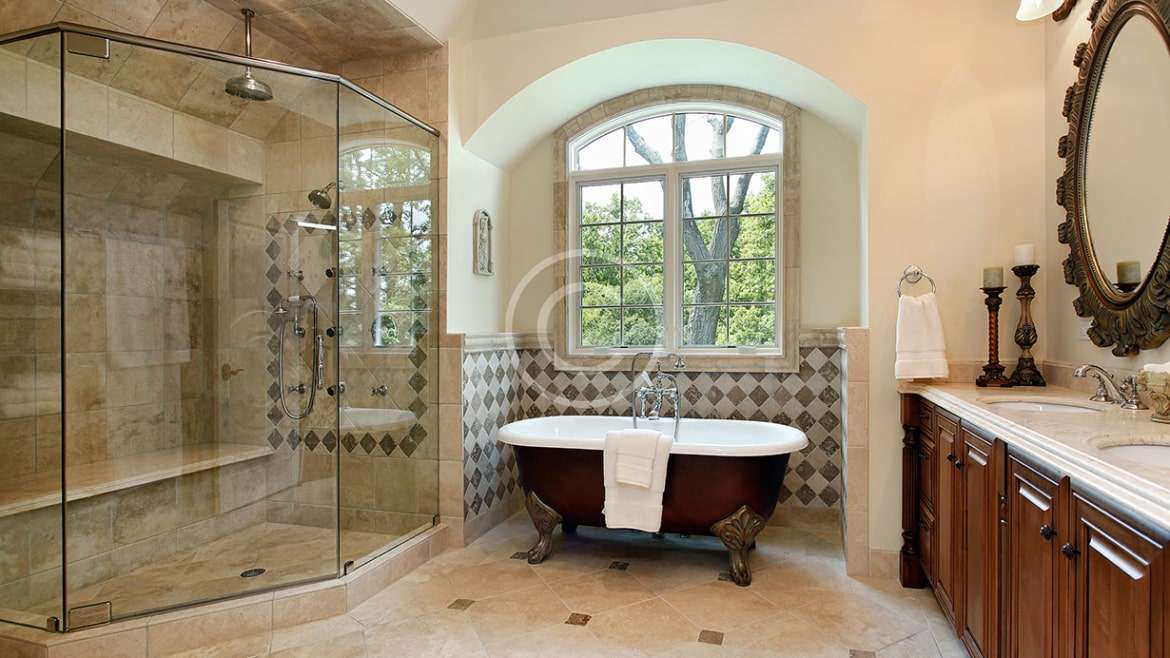A bathroom or washroom is a room, typically in a home or other residential building, that contains either a bathtub or a shower (or both). The inclusion of a wash basin is common. In some parts of the world e.g. India, a toilet is typically included in the bathroom; in others, the toilet is typically given a dedicated room separate from the one allocated for personal hygiene activities. In North American English the word ‘bathroom’ is sometimes used to refer to any room in a residence that contains a toilet, regardless of the inclusion of a bath or shower.
The design of a bathroom must account for the use of both hot and cold water, in significant quantities, for cleaning the body. The water is also used for moving solid and liquid human waste to a sewer or septic tank. Water may be splashed on the walls and floor, and hot humid air may cause condensation on cold surfaces. From a decorating point of view the bathroom presents a challenge. Ceiling, wall and floor materials and coverings should be impervious to water and readily and easily cleaned. The use of ceramic or glass, as well as smooth plastic materials, is common in bathrooms for their ease of cleaning. Such surfaces are often cold to the touch, however, and so water-resistant bath mats or even bathroom carpets may be used on the floor to make the room more comfortable. Alternatively, the floor may be heated, possibly by strategically placing resistive electric mats under floor tile or radiant hot water tubing close to the underside of the floor surface.
Electrical appliances, such as lights, heaters, and heated towel rails, generally need to be installed as fixtures, with permanent connections rather than plugs and sockets. This minimizes the risk of electric shock. Ground-fault circuit interrupter electrical sockets can reduce the risk of electric shock, and are required for bathroom socket installation by electrical and building codes in the United States and Canada. In some countries, such as the United Kingdom, only special sockets suitable for electric shavers and electric toothbrushes are permitted in bathrooms, and are labelled as such.
Bathroom lighting should be uniform, bright and must minimize glare. For all the activities like shaving, showering, grooming etc. one must ensure equitable lighting across the entire bathroom space. The mirror area should definitely have at least two sources of light at least 1 feet apart to eliminate any shadows on the face. Skin tones and hair color are highlighted with a tinge of yellow light. Ceiling and wall lights must be safe for use in a bathroom (electrical parts need to be splash proof) and therefore must carry appropriate certification such as IP44.


Leave a reply